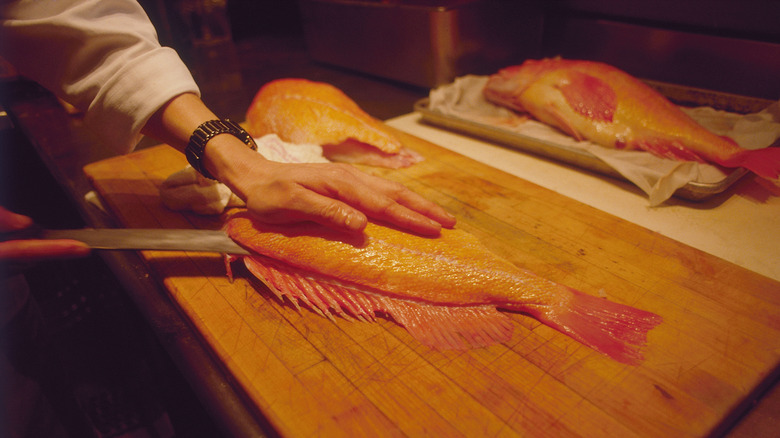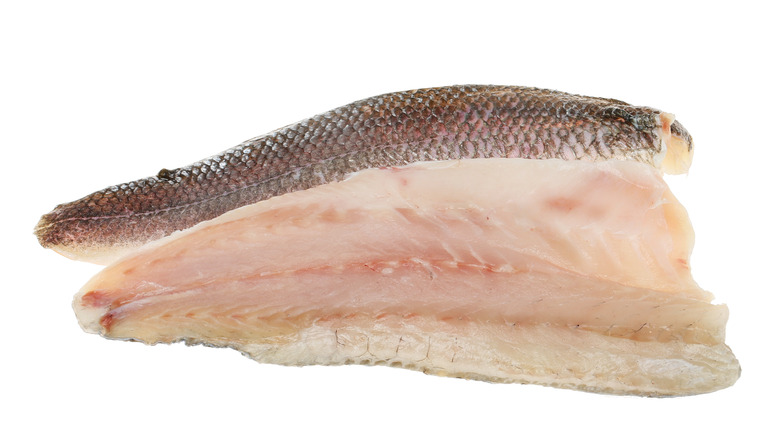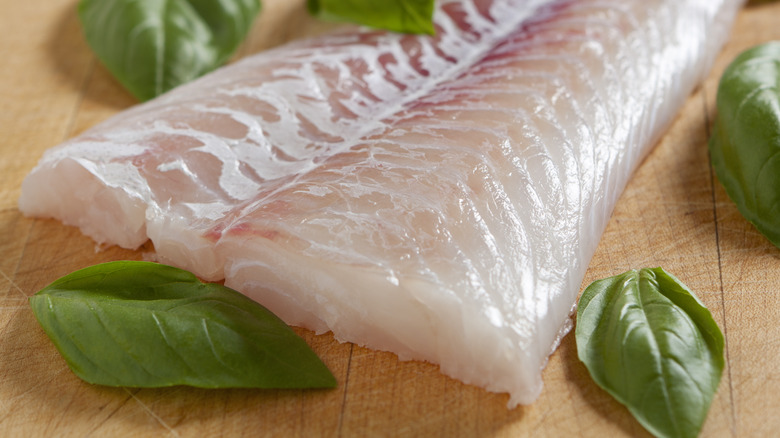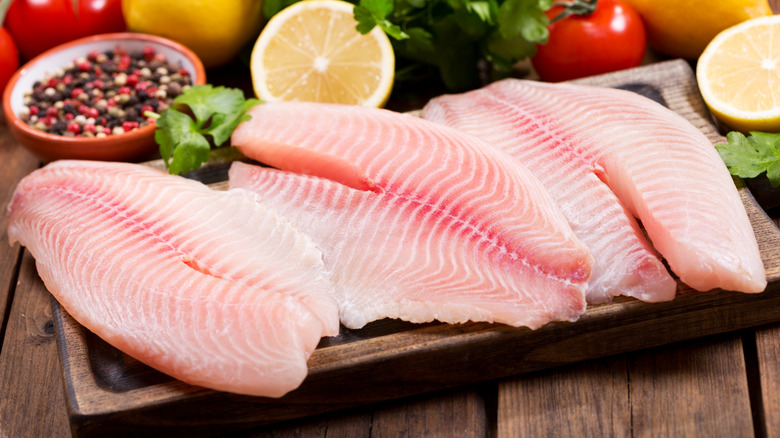The 3 Types Of Fish Fillet Cuts, Explained
Fish may take a bit more know-how than other proteins to prepare, but the extra effort is worthwhile. Not only does it star in some tasty dishes, but it comes with added health benefits, too. In fact, the American Heart Association recommends eating fish twice a week to reduce the risk of heart conditions and stroke.
So fish night it is, but now it's the task of buying some seafood for dinner. Cooking a whole fish — bones and all — may seem intimidating for many, so fish fillets are a logical go-to, however, just like in the butcher department, there's an abundance of lexicon to sift through. First, you'll need to choose the type of fish you want and then decide on how it's filleted, too. Fish fillets are deconstructed into three subcategories: j-cut, v-cut, and whole cut. The type of fillet you purchase will affect the flavor and determine the cooking techniques you'll use to prepare it so let's dive in, and break down what the three types of fish fillets are all about.
Whole fillets offer incredible flavor but need extra prep
Whole fillets are the most common cut type. Depending on the fish, they're often left skin-on, which can make for a delicious crispy crust, as well as an extra large boost of healthy Omega 3s. Just make sure to deskin it if you're not sure where the fish comes from — when bred in dirty waters, it can absorb mercury and other unhealthy contaminants, notes Healthline.
The skin can be a savory element, but more frustratingly, whole fillets might also include pin bones. Especially prevalent in salmon, these small, sharp needles are actually calcified nerve endings, hence why they are separated from the rest of the skeleton. There are several methods of removing them from the fillet – try the bowl trick, which pops them right out.
Despite such qualities, whole fillets will deliver a delicious taste suited well to many applications. Whether it's a marinated salmon or a pan-seared cod, whole fillets still retain most of the fat which is cut out of other fillets and adds to thier more intense fish flavor.
V-cuts have the pin bones removed
Don't want to deal with the pesky job of removing the bones yourself? Ask for a v-cut. The bones are cut off the flesh alongside the spine, lending to a v-like shape. However, the fat is still kept intact, which means that there isn't any flavor lost. Unfortunately, not all fish can be cut in this way. Some specimens like swordfish, mahi mahi, grouper, and others, are easy to fully fillet from the start, with no need for a V-cut. However, beloved ubiquitous fish like cod, salmon, and mackerel are often sold in fillets cut with this technique, and it makes throwing a fillet into the oven a stress-free experience.
The main downside to the V-cut is wastefulness. Up to 25% percent of the fish flesh may be lost in the process. As a result, V-cut fish are often more expensive. To increase sustainability, if you ask for a V-cut also ask to take home the excess bits of fish as well and use it to craft a fish broth.
A J-cut creates the leanest fish cut
Looking for a fish cut with the purest flavor and consistency? A J-cut's the move. In addition to sculpting away the pin bones, it snips off the nape, which is a fattier piece of meat on the bottom of the fish that can be more irregular and doesn't contain the picture-perfect flakiness of other fillets. As a result, you'll receive an even more tailored cut, since a J-cut removes even more flesh than a V-cut. Unfortunately, it means an increased price.
Frequently used with cod fillets and immensely popular with high-end restaurants, a J-cut limits the fish's imperfections. Whether or not it's necessary depends on the fish. With salmon, the difference is negligible; hence a V-cut is enough. However, with a fish like tilapia, a J-cut can greatly improve the end dish.
While each cut does lend a different experience, don't fret if you can't obtain your desired cut. The final taste varies more so based on the fish than its shape. So remember to purchase from a reputable source and looks for what's fresh — those factors will make the greatest difference.



